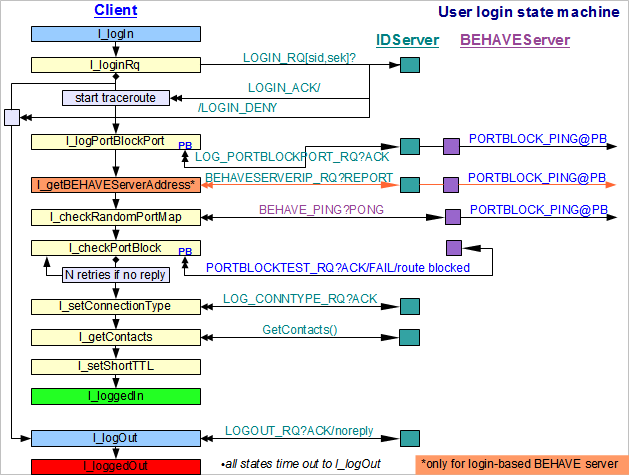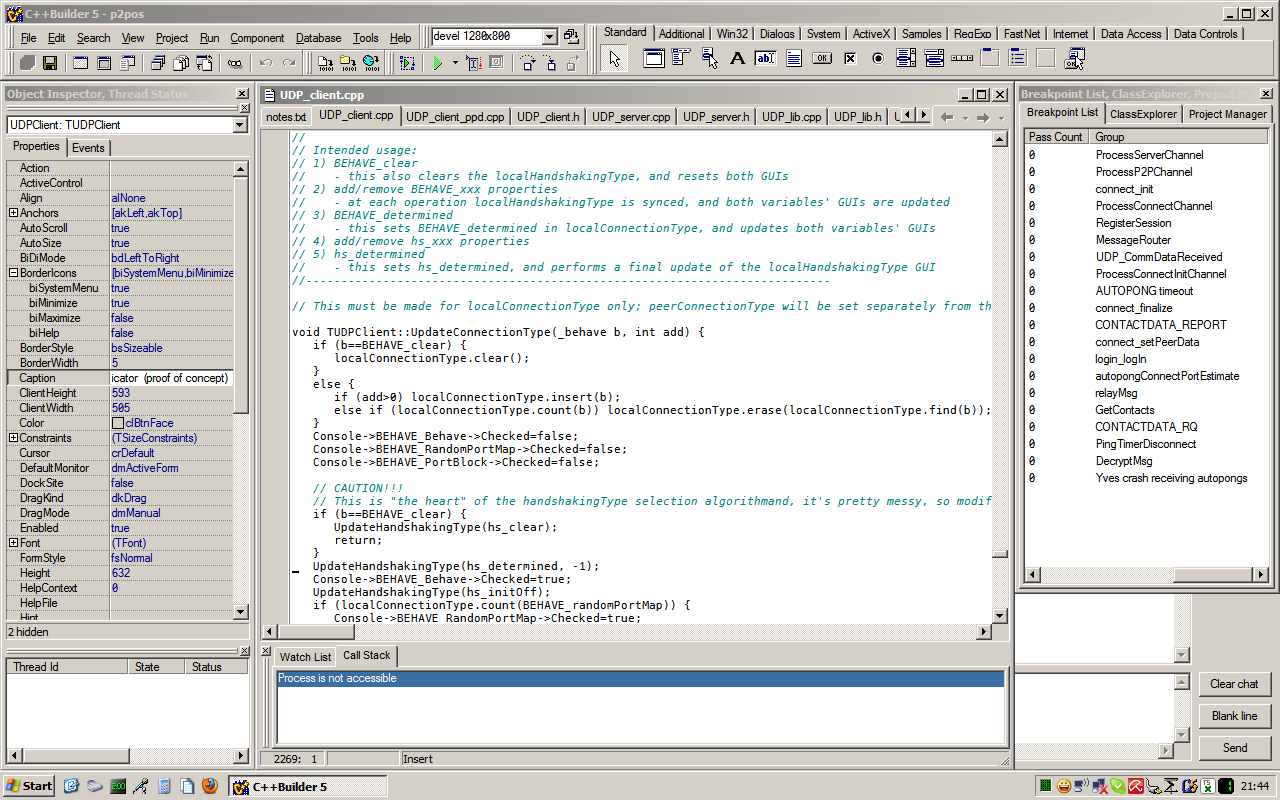Mea culpa for not updating this blog in quite a while, but it's not
because i slowed down work on it, but rather, much worse, i've hit a
roadblock which is pretty darn serious. In brief, when trying to write
the algorithm that would enable a p2pOS client to act as a relay for
its plugins (i.e. to "connect the crossed red lines" that i talked
about in a
previous post), i also had
to try to define the low-level API that the plugins will be using to
connect to one another (by means of their associated p2pOS clients that
will be acting as the relays, one relay at each end of a P2P
connection). And as one thing led to another, i eventually reached the
conclusion that what i need to do first is to establish
exactly
how a peer joins the network and connects to another peer. And this is
where things got really, really ugly.
Without entering into too many technical details, the important point
here is that in order to have two peers connect to each other, they
have to go through an initial "handshaking phase" during which the two
peers learn some essential things about one another (e.g. their IP
addresses, what kind of router(s)/firewall(s) they are behind, etc),
and this handshaking phase has to be negotiated through a dedicated
handshaking
server. Well, i can try to hide behind all sorts of technical
arguments, but that fact of the matter is that ever since i started
this project i never tried to calculate exactly
how much traffic
such a central handshaking server would require for a large P2P network
(i'm talking about 100,000,000...1,000,000,000 users being online),
only to find out now that the numbers are astronomical: namely, we're
talking about thousands, or even tens of thousands, of
terrabytes/month, which translates into a handshaking
server operating cost somewhere in the hundreds of thousand, maybe
millions, of dollars a month. This in turn means that hosting such a
server is not something that just about any punk can do in his
basement, which in turn means a large company would be required to
finance the network operation. Or, in layman's terms: the network can
never be truly open, no matter what license will be covering this
project, no matter what verbal commitments a company would make, etc.
And since the (maybe only) non-negotiable objective of this project is
to create a truly open P2P platform, well... you guessed it: i'm stuck.
But, as i said at the beginning of this post, all this mess doesn't
mean i gave up on the project; in fact, because it seems increasingly
likely that some sort of distributed handshaking algorithm will be
necessary, i made quite a few tweaks in the program in order to reduce
the traffic between connected peers (e.g. i managed to reduce the P2P
keep-alive traffic by about an order of magnitude by detecting the
peers' routers' port timeouts and only send keep-alive messages at the
required rate), i refined the router classes such that over 90% of the
routers models can now act as relays, and i introduced an algorithm
that detects if a peer is directly connected to the internet (or via
UPnP) such that it can serve as handshaking server in the network. This
is how the new "Settings" panel looks like now:
So what i'm doing right now is study what other smart-@$$
P2P projects have
done (e.g.
Gnutella,
Freenet, etc), i'm
trying to learn about various
DHT approaches
(there's a very nice tutorial talking about the basics
here), etc, and
i'll see if i'll be able to come up with a solution. Keep ya fingers
crossed for me, it's in the world's best interest and sh*t :)
PS
Here's how a p2pOS-based P2P session is established through NAT routers
with the help of a handshaking server: the blue messages are P2P
messages, while the green messages are relayed via the handshaking
server (once the handshaking phase is completed, all messages from one
peer go directly to the other, i.e. they are P2P messages):















